1-Day Damaraland Adventure: Relaxing & Sightseeing for Couples
Damaraland, Namibia
1 days
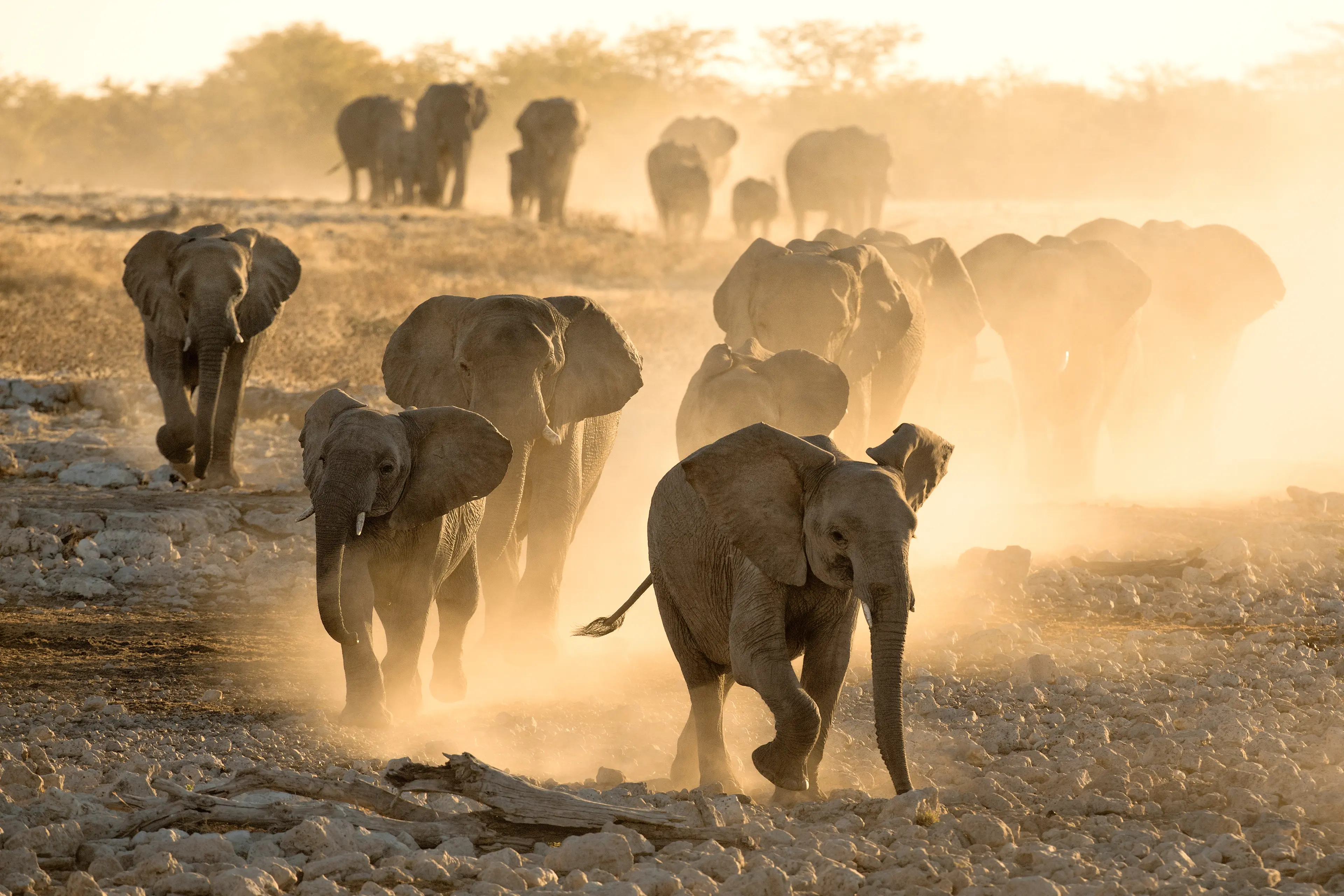
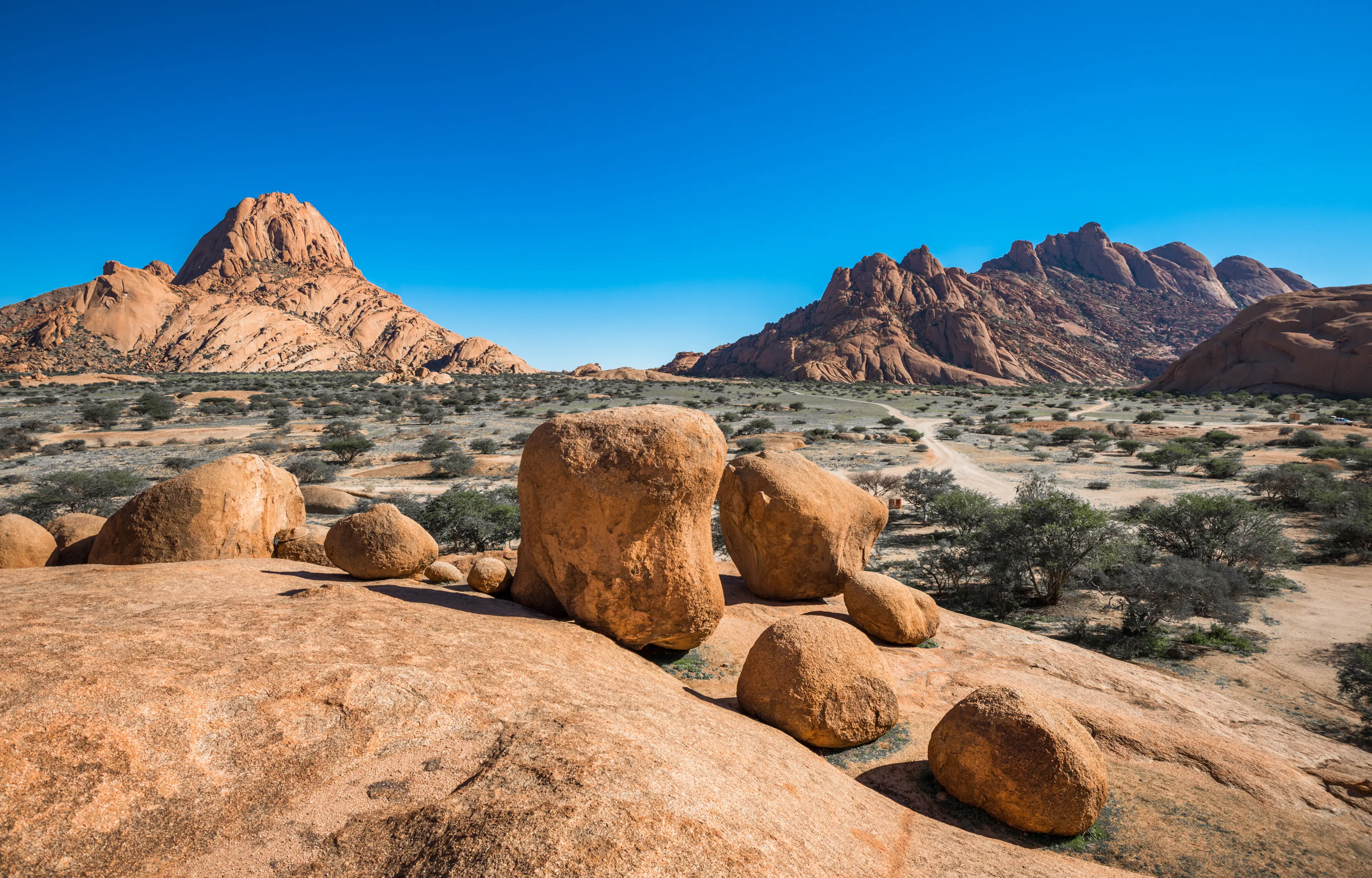
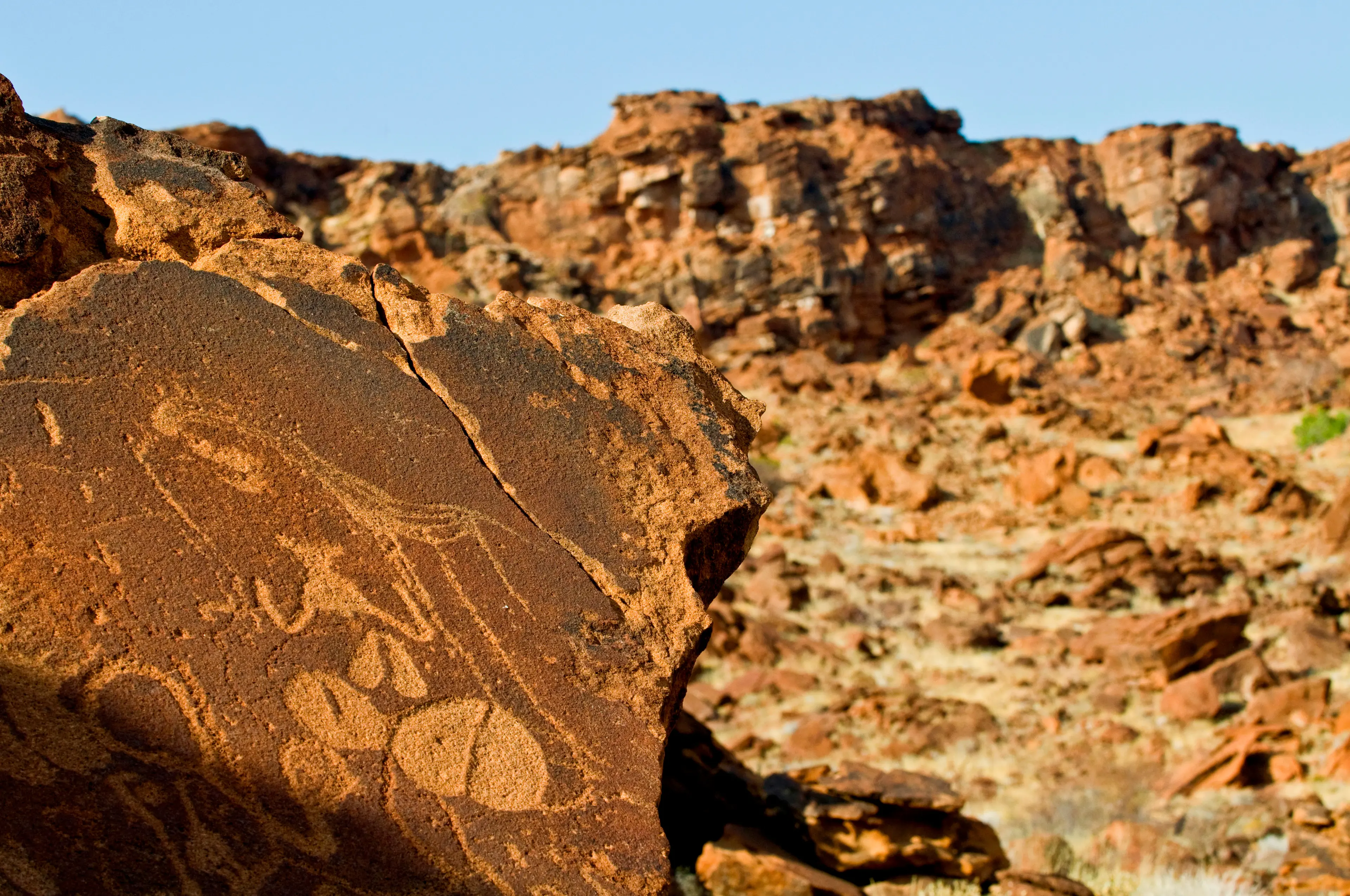
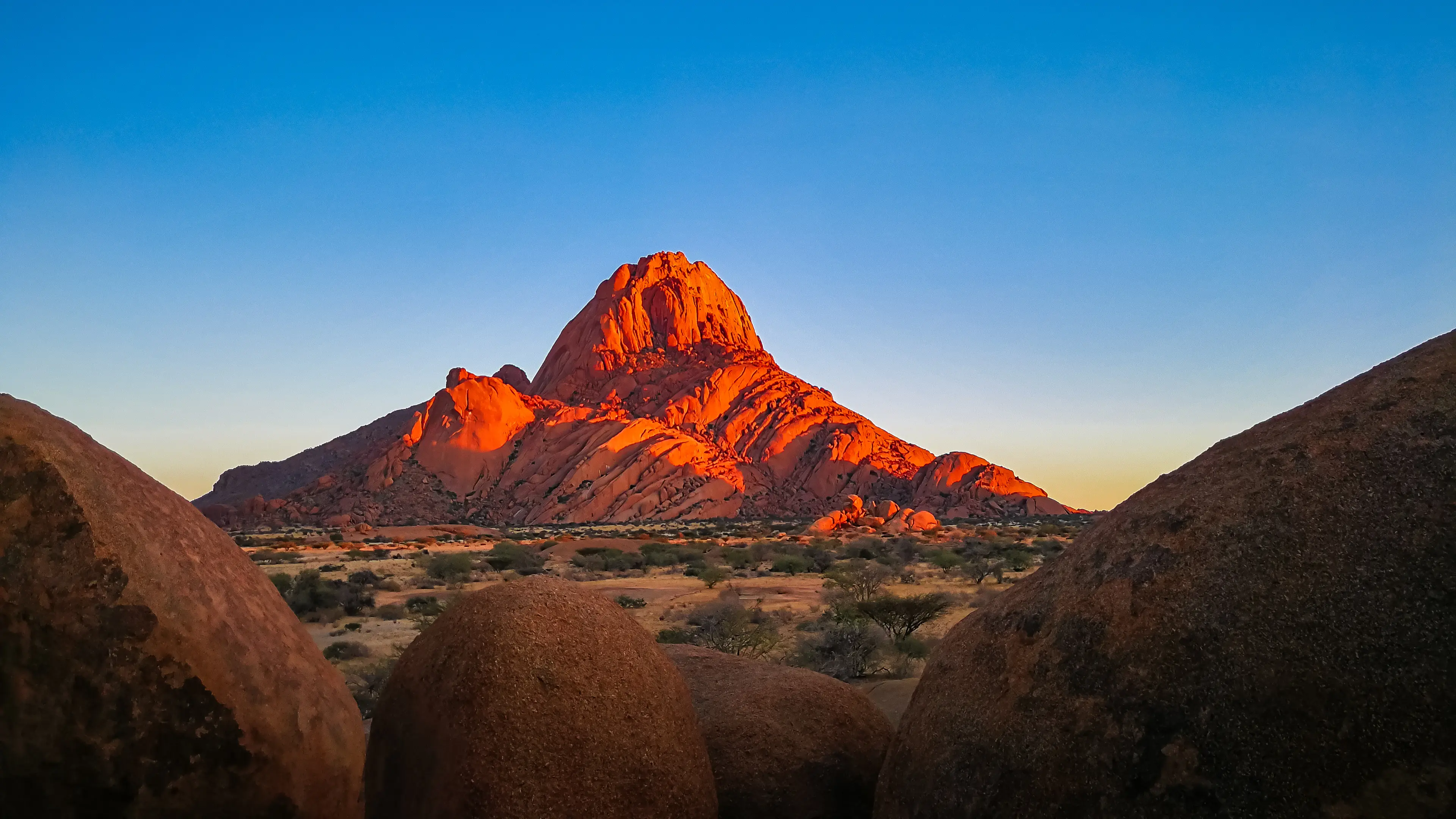

About Damaraland, Namibia
Experience the raw beauty of Damaraland, Namibia, a region of stark landscapes, ancient rock art, and unique wildlife. Explore the rugged terrains, home to the endangered desert elephant and black rhino. Visit the UNESCO World Heritage Site, Twyfelfontein, boasting one of Africa's largest concentrations of petroglyphs. Marvel at the Organ Pipes, a fascinating geological formation, and the mysterious Petrified Forest. Embark on a cultural tour to meet the indigenous Himba and Damara people, gaining insights into their traditional lifestyle. With its clear skies, Damaraland also offers exceptional stargazing opportunities. This untouched wilderness promises an unforgettable adventure.
1-Day Itinerary
Attractions in Itinerary (2)

1Twyfelfontein
Twyfelfontein is a site of ancient rock engravings in the Kunene Region of north-western Namibia. It consists of a spring in a valley flanked by the slopes of a sandstone table mountain that receives very little rainfall and has a wide range of diurnal temperatures.

2Desert-adapted elephants
These elephants have adapted to the harsh desert conditions of Damaraland, making them a unique sight. Tours are available to observe these magnificent creatures in their natural habitat.
Local Food and Drinks (12)

Biltong
Biltong is a form of dried, cured meat that originated in Southern Africa. It is a popular snack in Namibia and is often made from beef or game such as springbok.

Kapana
Kapana is a popular street food in Namibia. It is a type of barbecued meat, usually beef, which is often served with a spicy sauce and a side of bread.

Potjiekos
Potjiekos is a traditional Afrikaner stew made with meat and vegetables and cooked over coals in a three-legged pot. It is a common dish in Namibia.
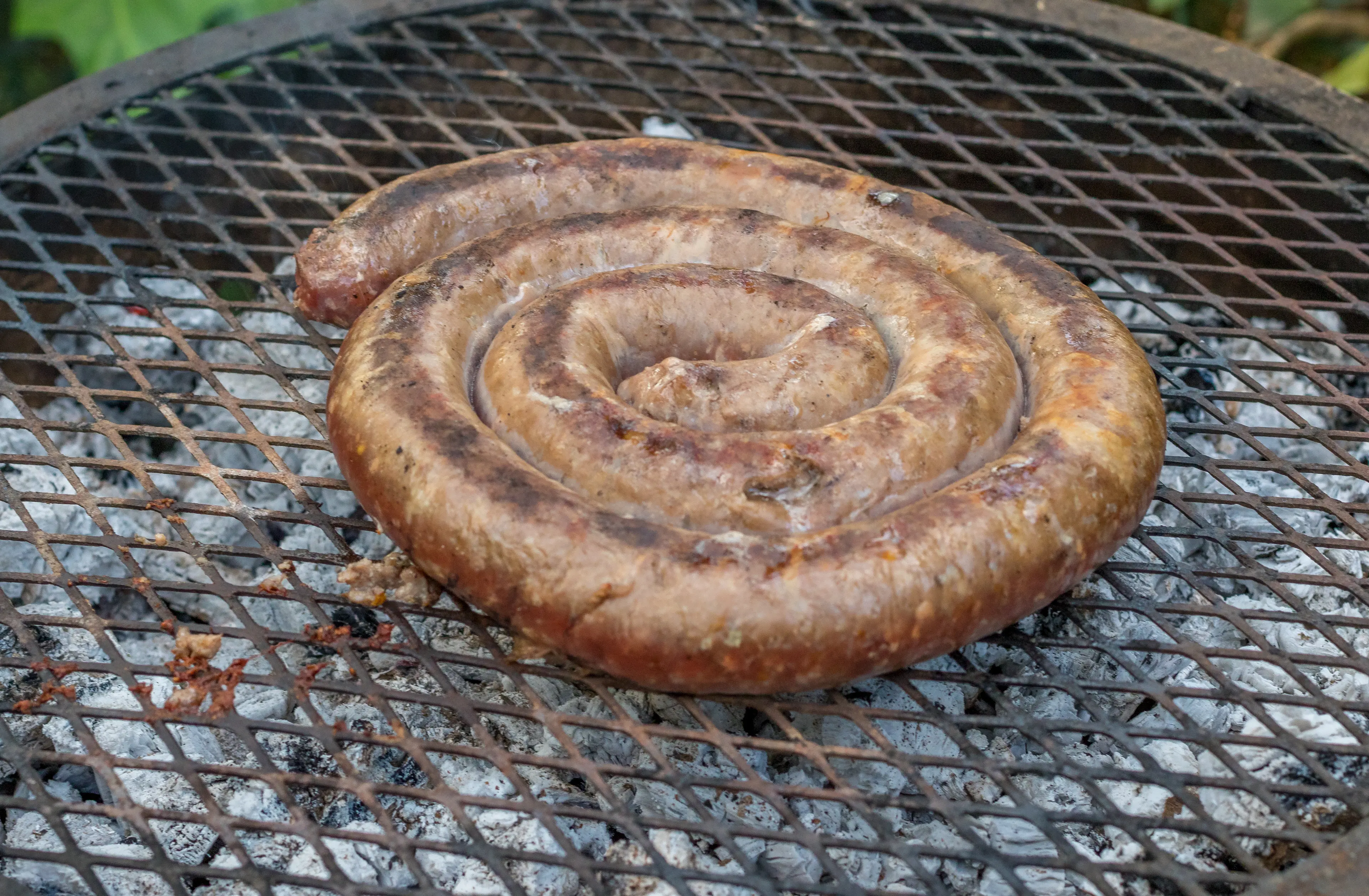
Boerewors
Boerewors is a type of sausage popular in Namibia. It is made from a mixture of beef and spices, and is typically grilled on a barbecue.
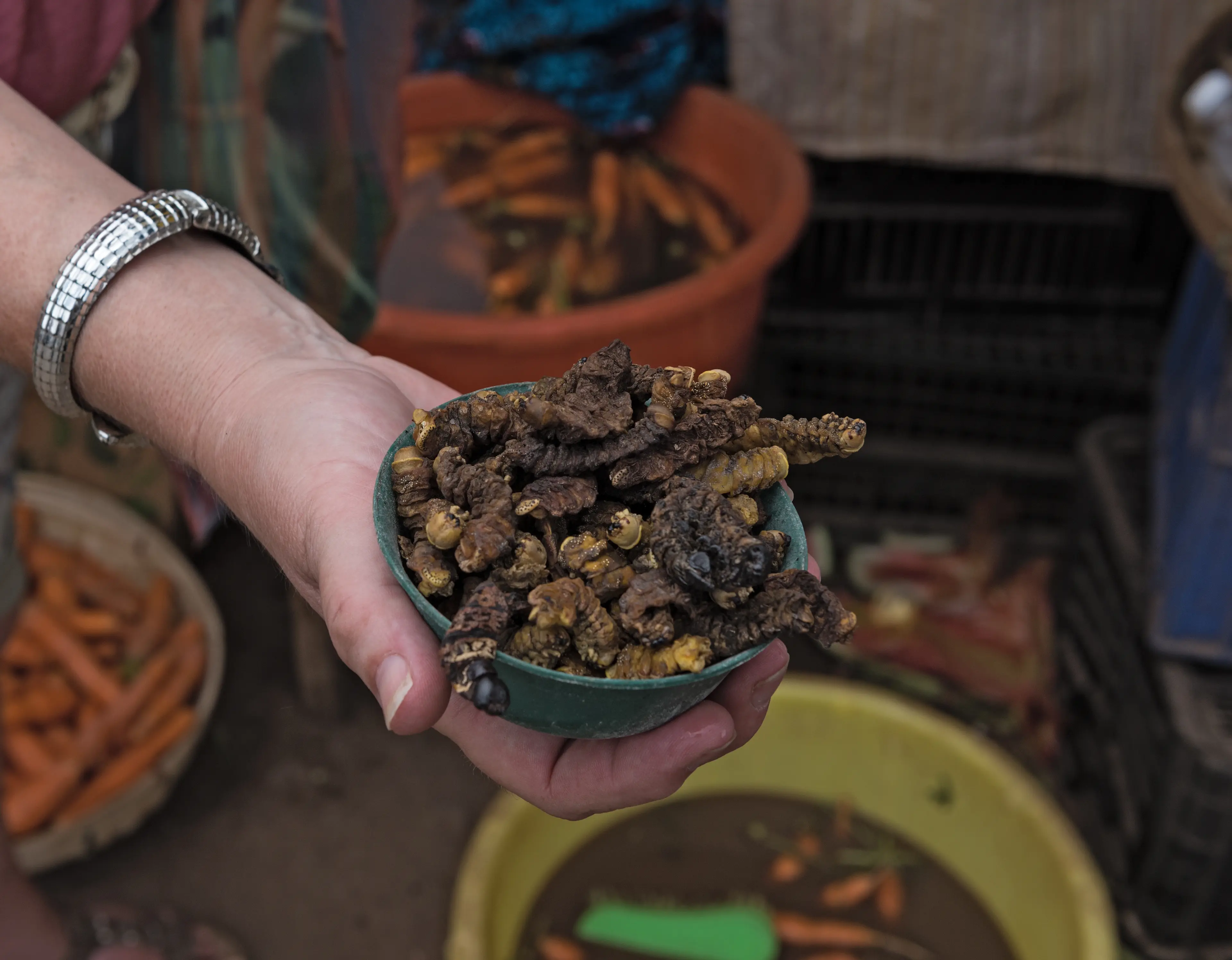
Mopane Worms
Mopane Worms are a type of caterpillar that is a popular snack in Namibia. They are usually dried and then rehydrated and cooked in a sauce.
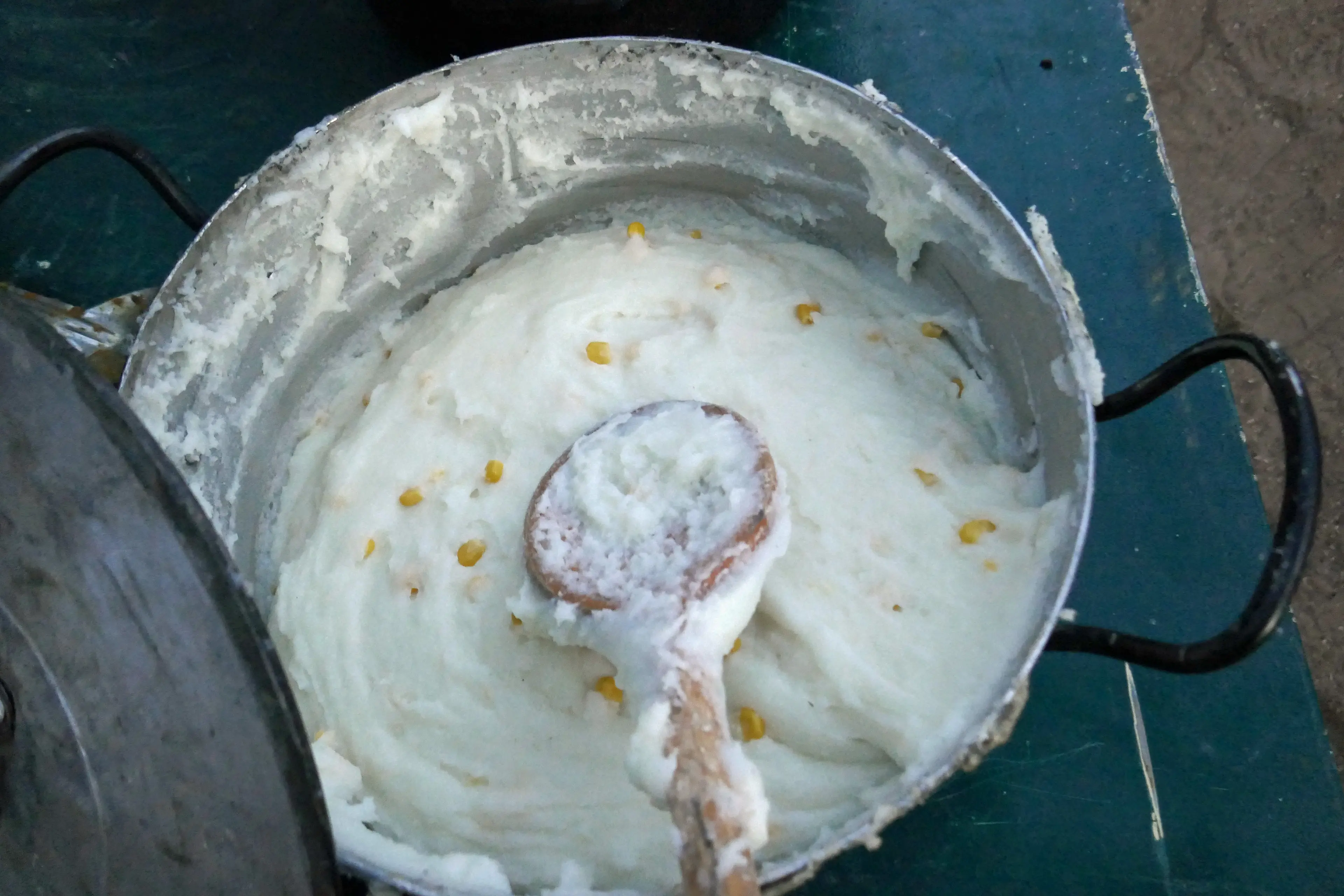
Oshifima
Oshifima, also known as mahangu porridge, is a staple food in Namibia. It is made from pearl millet and is often served with meat or vegetable stews.
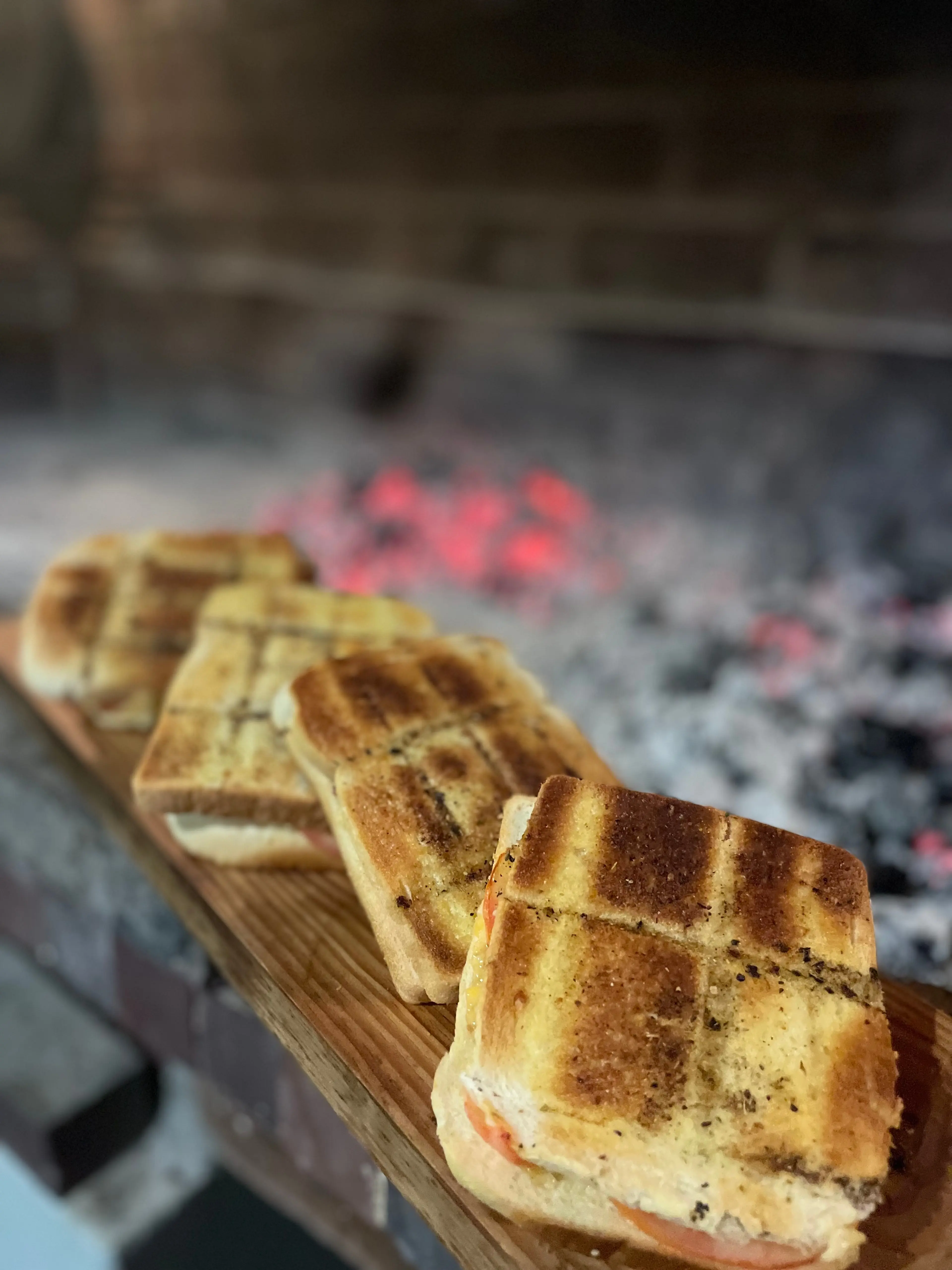
Braaibroodjie
Braaibroodjie is a grilled sandwich that is a popular side dish at barbecues in Namibia. It is typically filled with cheese, tomato and onion.
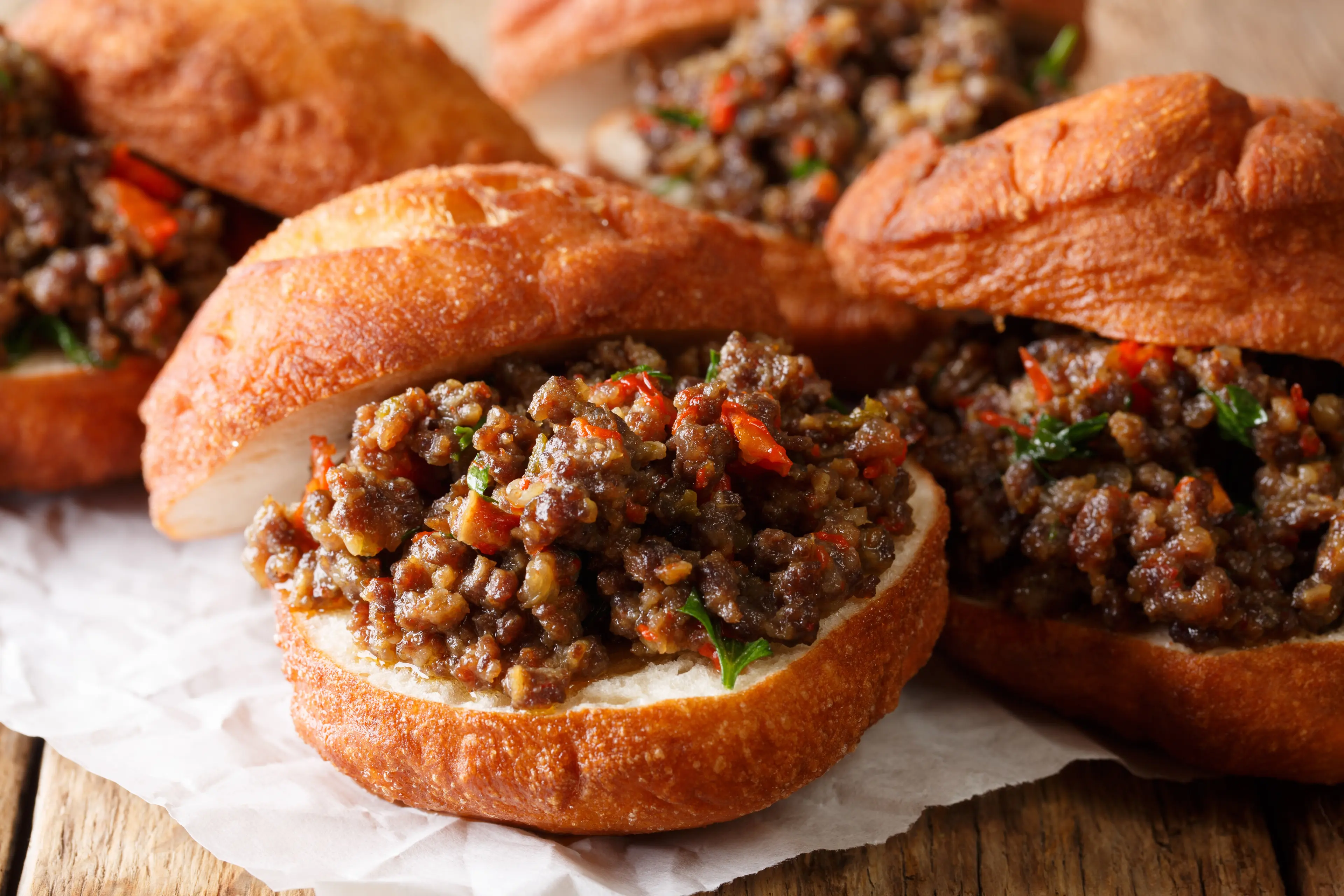
Vetkoek
Vetkoek is a traditional Afrikaner fried dough bread. In Namibia, it is often served as a snack with a filling of minced meat.

Oshikundu
Oshikundu is a traditional Namibian drink made from fermented millet. It is a popular homemade drink that is both refreshing and nutritious.
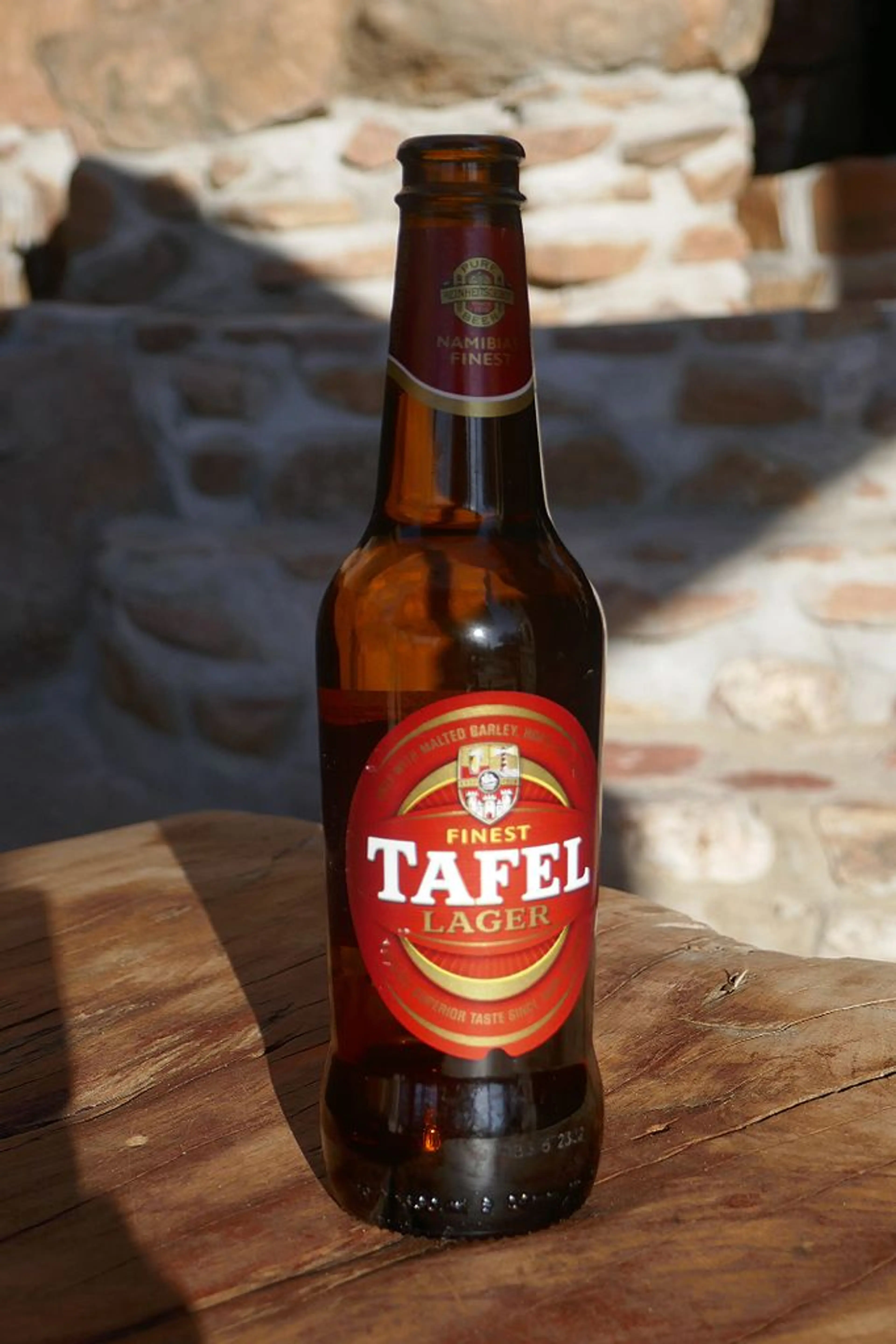
Tafel Lager
Tafel Lager is a popular beer in Namibia. It is a smooth and light lager that is often enjoyed with a meal or on its own.
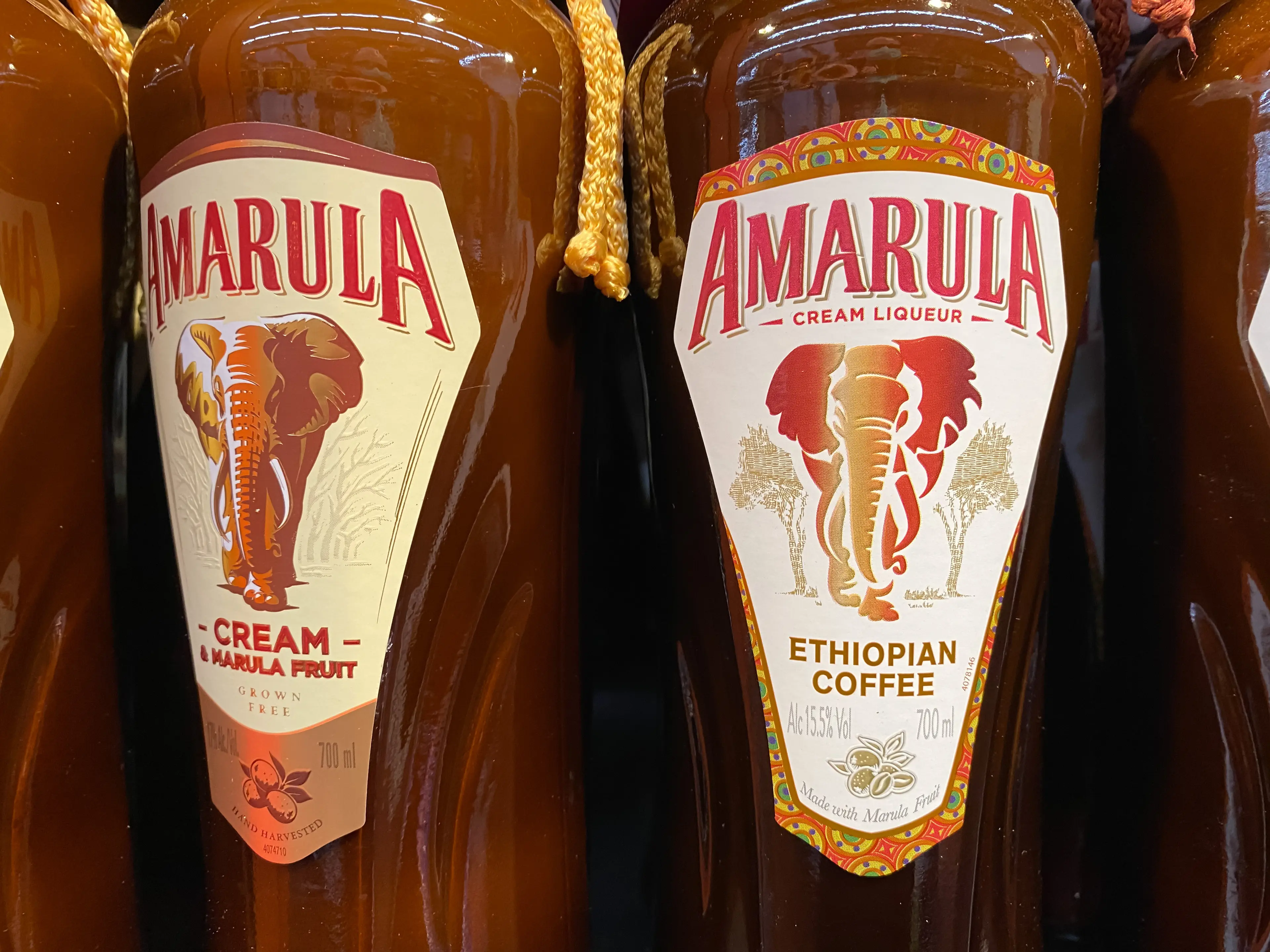
Amarula Cream Liqueur
Amarula Cream Liqueur is a popular drink in Namibia. It is made from the fruit of the African marula tree and is often served over ice.

Rooibos Tea
Rooibos Tea is a popular drink in Namibia. It is a herbal tea made from the leaves of the rooibos bush and is often enjoyed with milk and sugar.
Best time to visit
The best time to visit Damaraland, Namibia is during the dry season, which runs from May to October. During these months, the weather is generally sunny and warm, making it ideal for outdoor activities and wildlife viewing. The temperatures during the day range from 20°C to 28°C, while nights can be cooler. This is also the best time for game viewing as animals tend to congregate around water sources. However, if you're interested in bird watching, the wet season from November to April might be more suitable as migratory birds are present during this period.
How to get around
Car Rental
Renting a car is one of the most convenient ways to get around in Damaraland, Namibia. There are several car rental companies available at the airport and in major towns. 4x4 vehicles are recommended due to the rugged terrain.
Guided Tour
Guided tours are a popular way to explore Damaraland. These tours often include transportation, meals, and accommodation. They also provide an opportunity to learn about the local culture and wildlife from an experienced guide.
Private Driver
Hiring a private driver is another option for getting around Damaraland. This can be a more comfortable and convenient way to travel, especially for those unfamiliar with the local driving conditions.
Ridesharing
Ridesharing services are not widely available in Damaraland. However, in some larger towns and cities, you may find services like Uber or local equivalents.
Bicycle Rental
For the more adventurous, renting a bicycle can be a great way to explore the local area. However, this is best suited to the cooler months and for relatively short distances due to the harsh climate.
Public Transport
Public transport options are limited in Damaraland. There are some local buses and shared taxis, but these can be unreliable and are not recommended for tourists.
Foot
Walking can be a good way to explore local towns and villages. However, due to the large distances and harsh climate, it is not recommended as a primary mode of transport.
Important information
Currency NAD
Time zoneUTC+1
Driving sideLeft
Emergency phoneAmbulance: 2032276; Fire: 2032270; Police: 1011
Drinking waterYes, but some opt for bottled water
Power sockets
Voltage220 V
Things to know about Damaraland, Namibia as a first time visitor
1
Namibia uses the Namibian Dollar (NAD) as its currency, but the South African Rand is also widely accepted.
2
English is the official language of Namibia, but Afrikaans and German are also widely spoken.
3
Namibia is in the Central Africa Time Zone (CAT), which is 2 hours ahead of Greenwich Mean Time (GMT+2).
4
Namibia has a very dry climate. The rainy season is from November to April, but rainfall is sparse and unpredictable.
5
Temperatures in Damaraland can range from 14°C (57°F) in winter to 38°C (100°F) in summer.
6
It's important to stay hydrated and use sun protection due to the high temperatures and intense sun.
7
Tap water is generally safe to drink in Namibia, but bottled water is widely available.
8
Namibia has a low crime rate, but it's still important to take standard precautions such as not leaving valuables unattended.
9
Namibia drives on the left-hand side of the road, and most roads are gravel.
10
It's recommended to have comprehensive travel insurance that covers medical evacuation, as medical facilities are limited outside of the main towns.
11
Damaraland is a malaria-free zone, but it's still recommended to have up-to-date vaccinations.
12
Namibia has a strong conservation ethos, so it's important to respect the environment and wildlife.
13
Damaraland is remote and sparsely populated, so it's a good idea to have a reliable map or GPS.
14
Cell phone coverage can be patchy in Damaraland, so don't rely solely on your phone for navigation or communication.
15
It's recommended to carry cash, as not all places accept credit cards, especially in remote areas.
16
Tipping is customary in Namibia. A guideline is 10% of the bill in restaurants and a small amount for hotel staff and guides.
17
Public restrooms may not be readily available in remote areas of Damaraland, so be prepared for this when planning your trip.
18
Damaraland can be very windy, so pack a windbreaker or jacket.
19
It's important to respect local customs and traditions. Always ask permission before taking photos of people.
20
Namibia has strict laws on the export of plants, animals, and minerals, including rocks and sand. Be aware of these laws to avoid fines or confiscation.
Packing List
Clothing
Lightweight clothing
Comfortable walking shoes
Hat for sun protection
Sunglasses
Swimwear (if planning to swim)
Light jacket or sweater for cooler evenings
Toiletries
Sunscreen
Insect repellent
Personal hygiene items (toothbrush, toothpaste, deodorant)
Travel-size shampoo and conditioner
Hand sanitizer
First aid kit with essential medicines
Travel documents and essentials
Passport
Visa (if required)
Travel insurance documents
Emergency contact information
Local currency (Namibian Dollar)
Credit/debit cards
Electronics and gadgets
Camera
Extra memory cards for camera
Mobile phone
Chargers for electronic devices
Universal travel adapter
Portable power bank
Miscellaneous items
Reusable water bottle
Snacks for the journey
Travel guidebook or map
Binoculars for wildlife viewing
Travel pillow and blanket for comfort
Notebook and pen for journaling
Weather Conditions
Damaraland, Namibia, is known for its semi-desert climate, which means it experiences high temperature variations between day and night. The region is generally warm to hot during the day and cooler at night. The hottest months are usually between November and February, with temperatures soaring up to 104°F (40°C) during the day. It's advisable to wear light, breathable clothing during these months, stay hydrated, and avoid strenuous activities during the peak heat hours of the day. From March to October, the weather is milder and more pleasant, with daytime temperatures ranging between 68°F (20°C) and 86°F (30°C). Evenings can be quite chilly, dropping to around 50°F (10°C), so it's a good idea to pack some warm clothing for the night. Rainfall in Damaraland is sparse and unpredictable, but when it does occur, it's usually between January and April. It's advisable to pack a lightweight rain jacket or umbrella during these months. Regardless of when you visit, don't forget to pack sun protection, including a hat, sunglasses, and sunscreen, as the sun can be intense throughout the year. Lastly, remember that the arid climate can dehydrate you quickly, so always carry water with you and stay hydrated. Enjoy your visit to the stunning landscapes of Damaraland!
| Month | Hi / Lo (°C) | Weather Overview |
|---|---|---|
January | 37° / 17° | January is the hottest month in Damaraland, Namibia, with temperatures reaching up to 37°C. It's also the wettest month, so pack accordingly. |
February | 36° / 17° | February is still quite hot, with temperatures similar to January. Rainfall decreases slightly, but it's still a wet month. |
March | 35° / 16° | March sees a slight decrease in temperature, but it's still hot. Rainfall continues to decrease, making it a better time for outdoor activities. |
April | 33° / 13° | April is the start of the cooler season in Damaraland, with temperatures dropping to a more comfortable range. Rainfall is minimal, making it a great time to visit. |
May | 30° / 10° | May is a pleasant month to visit Damaraland, with mild temperatures and little to no rainfall. It's a great time for wildlife viewing and outdoor activities. |
June | 28° / 7° | June is the start of winter in Damaraland, with temperatures dropping further. However, it's a great time for wildlife viewing as animals gather around water sources. |
July | 27° / 6° | July is the coldest month in Damaraland, but it's still quite mild by most standards. It's a great time for wildlife viewing and stargazing. |
August | 30° / 9° | August sees temperatures start to rise again, but it's still a comfortable time to visit. It's a great time for wildlife viewing and exploring the beautiful landscapes. |
September | 33° / 12° | September is a warm month in Damaraland, with temperatures starting to rise. It's a great time for outdoor activities and wildlife viewing. |
October | 36° / 15° | October is a hot month in Damaraland, with temperatures rising significantly. However, it's still a good time for wildlife viewing and exploring the stunning landscapes. |
November | 37° / 16° | November is a hot and wet month in Damaraland, with the start of the rainy season. It's a good time for bird watching, as many migratory species arrive. |
December | 37° / 17° | December is a hot and wet month in Damaraland, similar to November. It's a good time for bird watching and enjoying the lush, green landscapes. |
Did you know?
Places near by Damaraland, Namibia

Swakopmund
A coastal city known for its German colonial architecture, with attractions like the Swakopmund Museum, National Marine Aquarium, and the Jetty 1905.

Etosha National Park
One of the world's great wildlife sanctuaries with diverse animal species. It's dominated by the vast Etosha salt pan.

Spitzkoppe
A group of bald granite peaks in the Namib desert. Known as 'The Matterhorn of Africa', it's a paradise for hikers and climbers.

Brandberg Mountain
Namibia's highest mountain, home to the famous 'White Lady' rock painting and numerous wildlife species.

Otjiwarongo
Known as the Cheetah Capital of the World, it's home to the Cheetah Conservation Fund (CCF).

Twylfontein
A UNESCO World Heritage Site, it's one of the most important rock engraving sites in Africa.

Erongo Wilderness Lodge
A unique lodge nestled amongst the Erongo Mountains, offering luxury accommodation and nature activities.

Omaruru
A small town known for its artists' community, wineries, and the annual Omaruru Arts Festival.